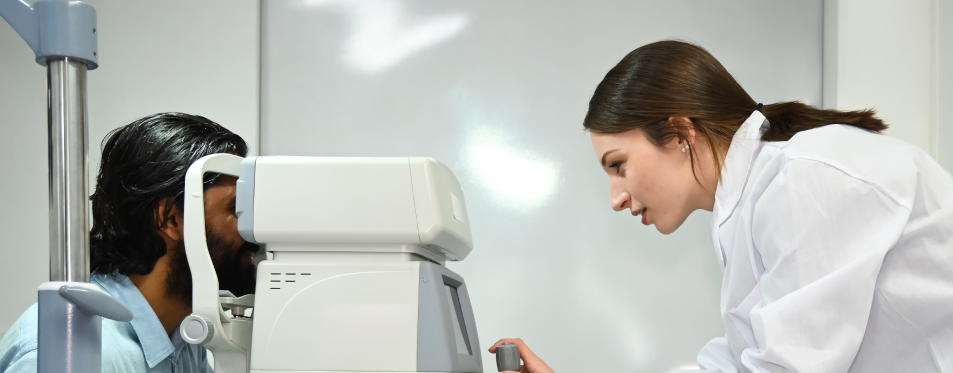
A visual fields test measures your ability to see in all directions—up, down, left, and right—without moving your eyes. This test is essential for evaluating your peripheral vision and detecting areas where your vision may be impaired.
Many eye conditions and neurological disorders can affect your peripheral vision before you notice any symptoms. A visual fields test is critical for detecting these problems early and preventing further vision loss.

A visual fields test is quick, painless, and non-invasive. Here’s what to expect during the test:
The test is comfortable and easy, and it provides valuable insights into your eye health.

There are several types of visual fields tests used to assess your peripheral vision:
The specific type of test we use will depend on your symptoms, risk factors, and any existing conditions.
A visual fields test can detect a range of conditions that affect peripheral vision, including:
By detecting these conditions early, we can provide appropriate treatments to protect your vision.

At Victoria Village Optometry, we’re committed to protecting your vision through comprehensive eye exams and advanced diagnostic tools. A visual fields test is an important part of assessing your eye health and detecting conditions early. Schedule your visual fields test today to safeguard your vision and ensure early detection of any problems.
1315 Lawrence Avenue East, Unit 513, Toronto, ON, M3A 3R3, Canada